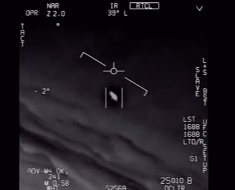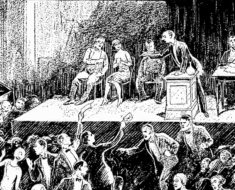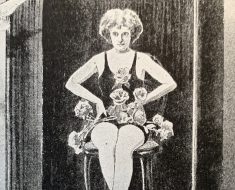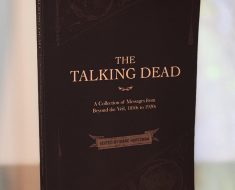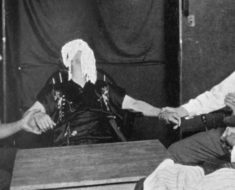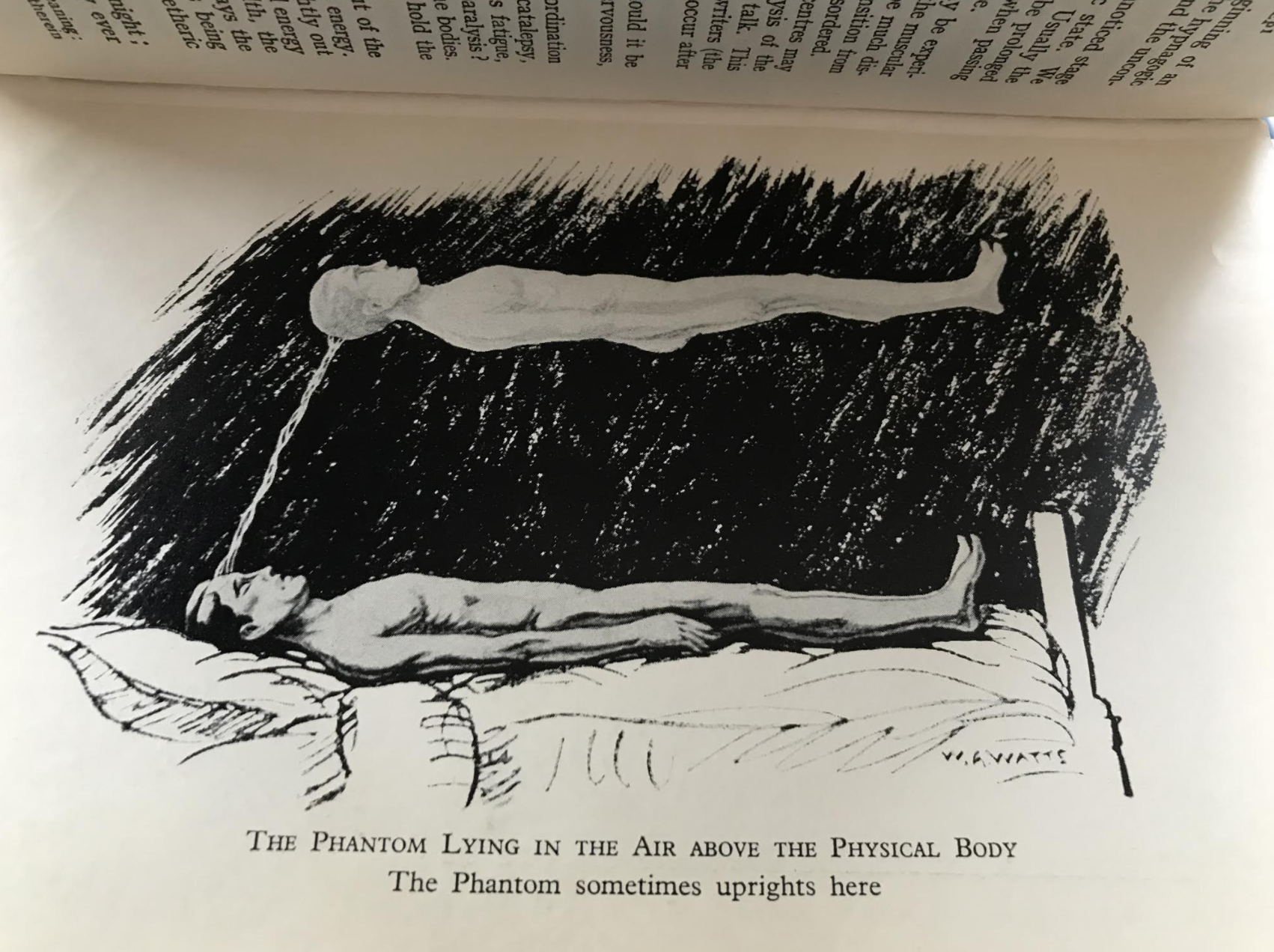
Astral Projection begins. From The Projection of the Astral Body, by Hereward Carrington and Sylvan Muldoon (1929).
Astral projection is the idea of being able to leave your physical body and journey into the world (physical and spiritual) with just your soul. Afterward, of course, you can dive back into your body and carry on with life.
But for a more specific description of the astral body, here’s what attorney, author and occultist, William Walker Atkinson had to say:
“The Astral Body, belonging to every person, is an exact counterpart of the perfect physical body of the person. It is composed of fine ethereal matter, and is usually encased in the physical body. In ordinary cases, the detachment of the astral body from its physical counterpart is accomplished only with great difficulty, but in the case of dreams, great mental stress, and under certain conditions of occult development, the astral body may become detached and sent on long journeys, travelling at a rate of speed only less than that of light-waves.”
In 1937, the International Institute for Psychical Research planned an experiment to capture astral projection on film. This required a few things: the right equipment for such a job, and someone who believed he could leave his physical body behind.
The group of investigators believed they had both.
For a volunteer, they invited author William Gerhardi, who had claimed to have out-of-body experiences. He once claimed to have traveled from London to Hastings, where he visited a friend’s home. Once he returned to his physical body he told his friend what he had seen. Gerhardi also said he had walked on ceilings and passed through solid walls during his travels.
Regarding the equipment, the researchers set up a “cloud chamber” with cameras, hoping it would capture the first photograph of a human soul.
“It is believed that if the test is successful photographs will show a shadowy, gossamer-like body, an exact duplicate of the human form, leaving the novelist,” a newspaper reported.
“Many difficulties lie in the way of such an experiment,” Gerhardi told reporters. “There is the risk that if I were placed in some kind of tank and succeeded in projecting myself, I might not be able to return to my physical body. That would mean death.”
Though no further articles reported on the experiment, Gerhardi lived until 1977. So if he participated in the experiment, he survived. It would also mean the experiment failed, since photos of souls still don’t exist.
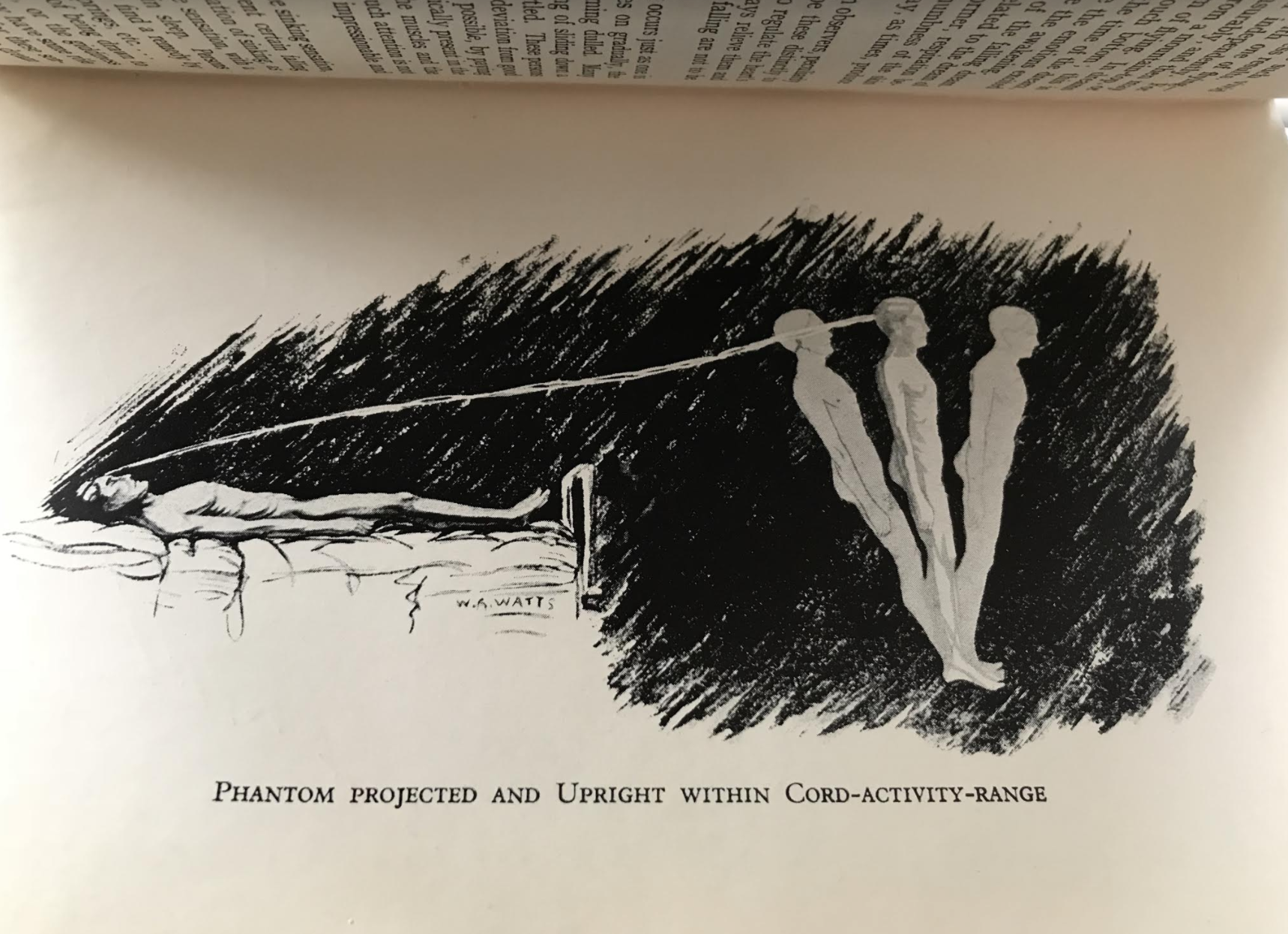
Astral Projection, from The Projection of the Astral Body, by Hereward Carrington and Sylvan Muldoon (1929).
For those who think Gerhardi and other astral projectors might be confusing their powers with dreams, Hereward Carrington would vehemently disagree. Carrington, who claimed to have projected his astral body hundreds of times, said this in his book, The Projection of the Astral Body:
About the first hot-shot that the sceptic, or even delvers into the supernormal, will give the conscious projector, is that he (the projector) did not leave his physical body at all, and that what he supposed happened was but a dream which was indelibly registered in his memory. There is only one answer to this ridiculous supposition. If a person does not know when he is conscious, then indeed he should be submitted to a sanity test!”
The doubter will say: “Now, you could have been dreaming all this. In your dream you would not know you were not fully conscious.” This is reverse reasoning. In a dream a man may not know that he is unconscious; but when he is conscious he does know positively that he is not dreaming! Why? Simply because we have a distinct understanding of both present and past, when conscious. So do not form the idea that conscious astral projection is but a dream reminiscence.”
Of course, Carrington also believed in post-mortem telepathic hypnotism, which you can read about here.

